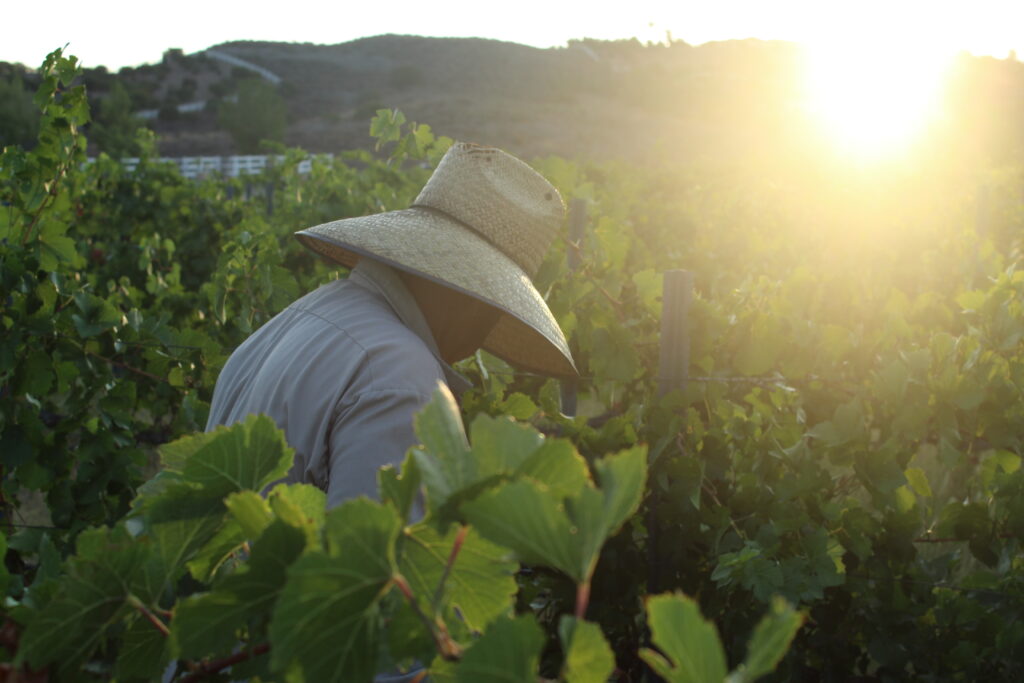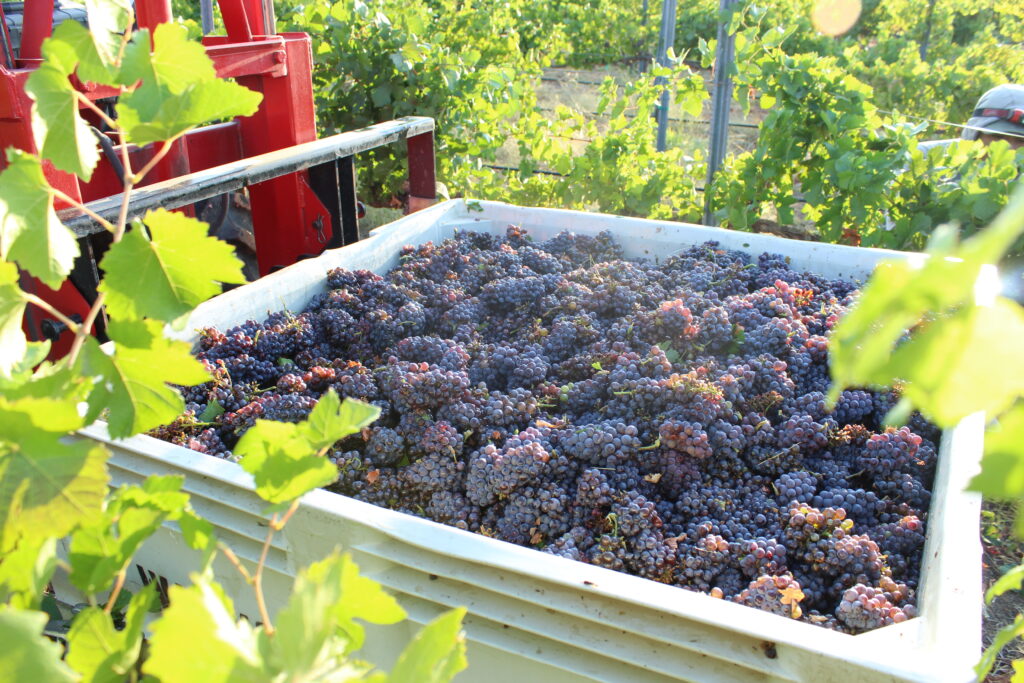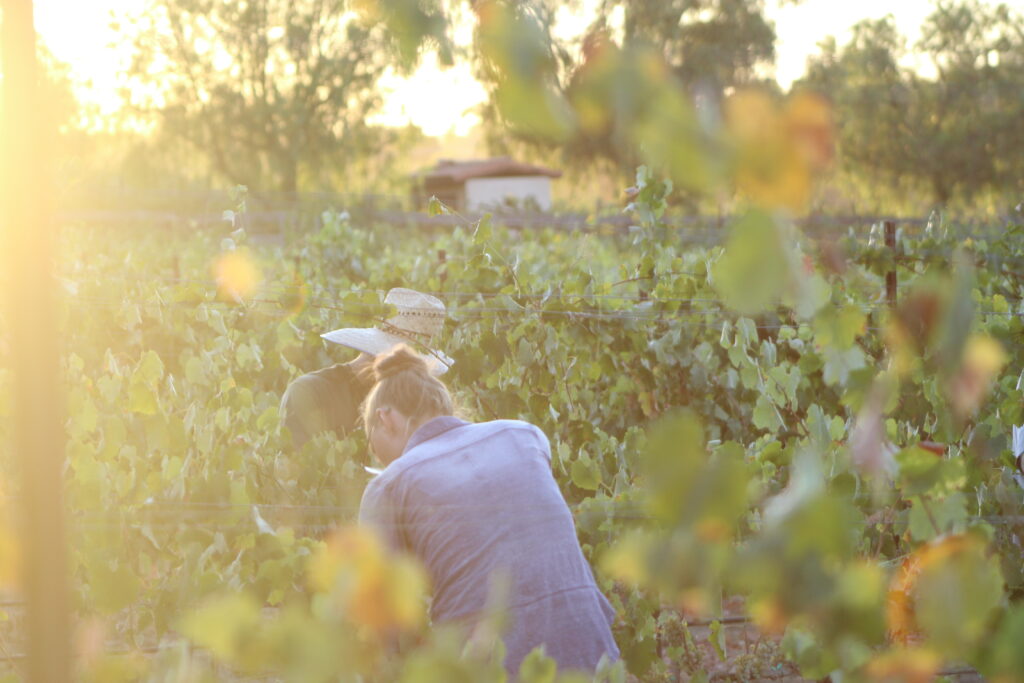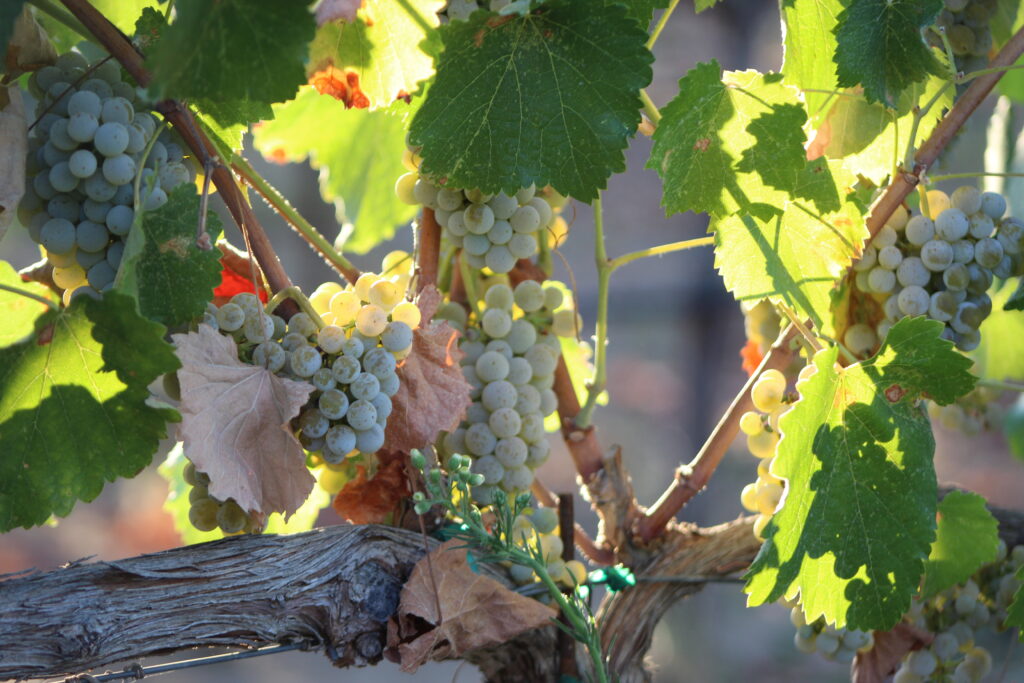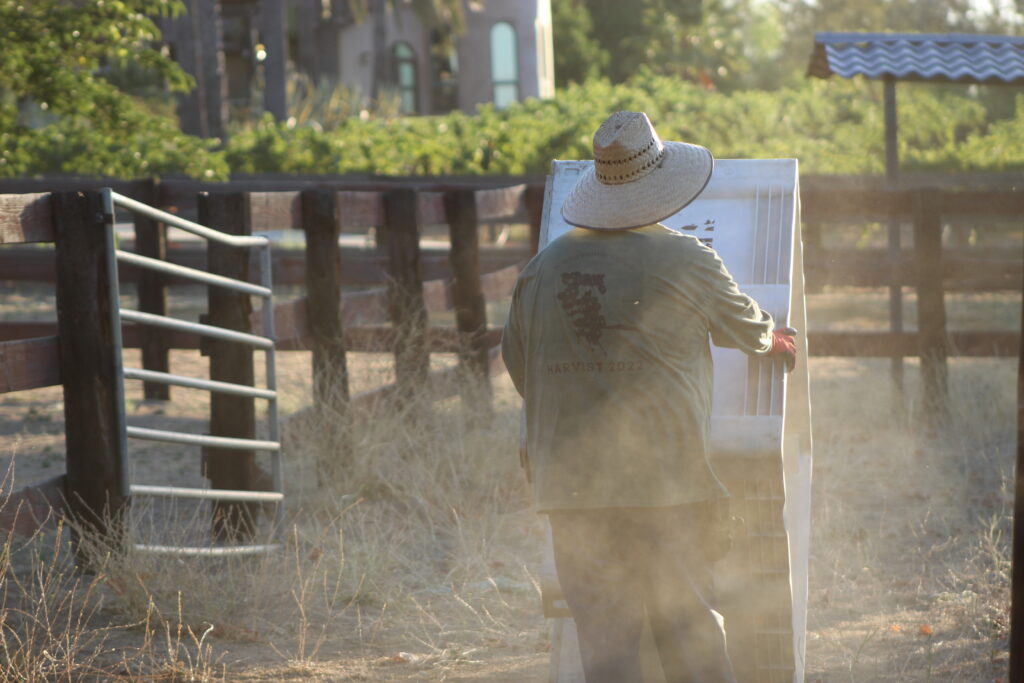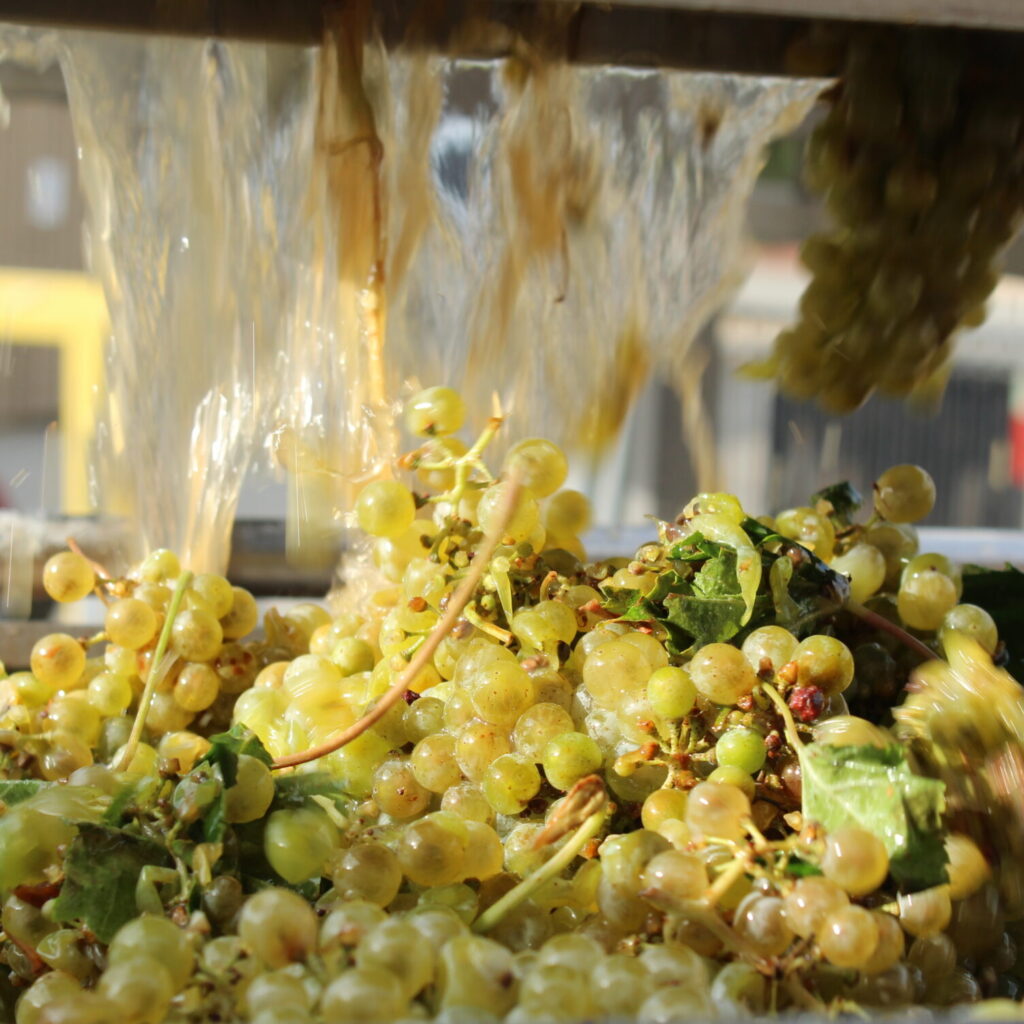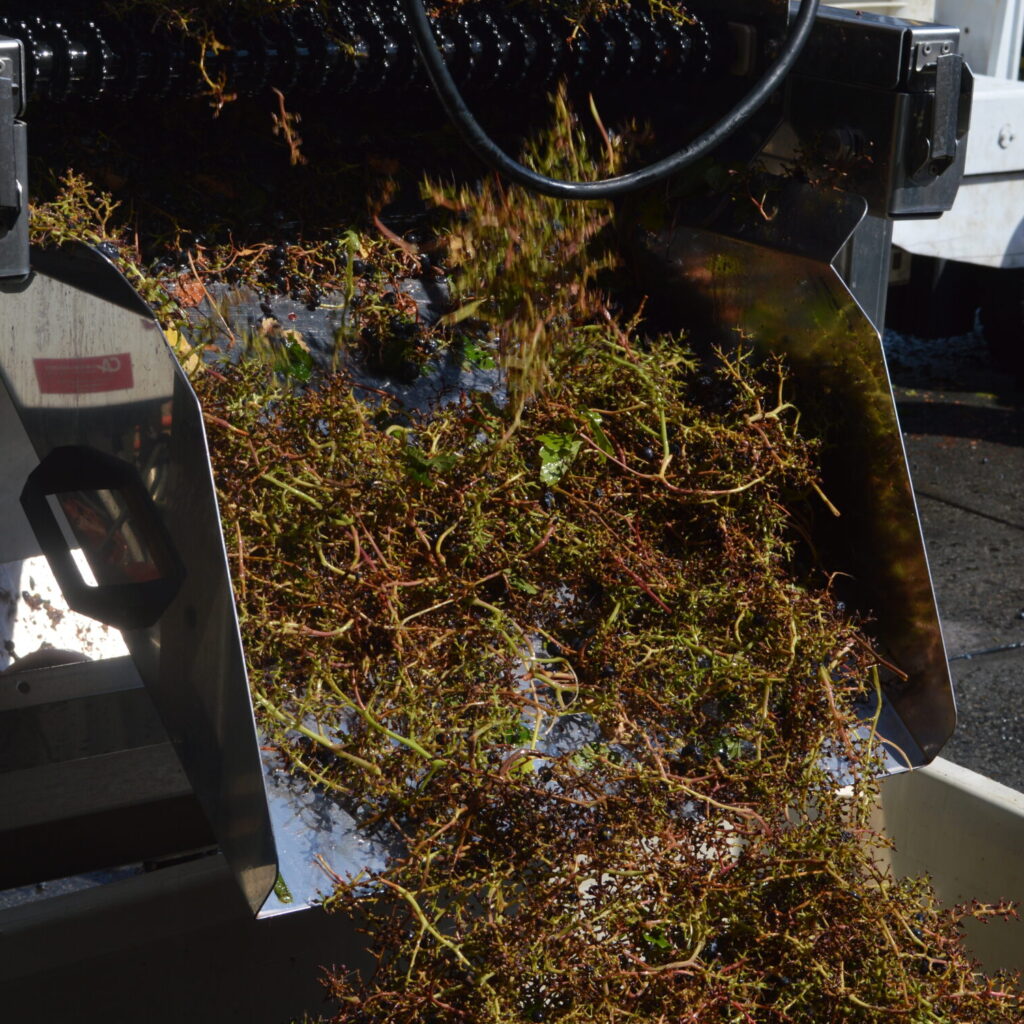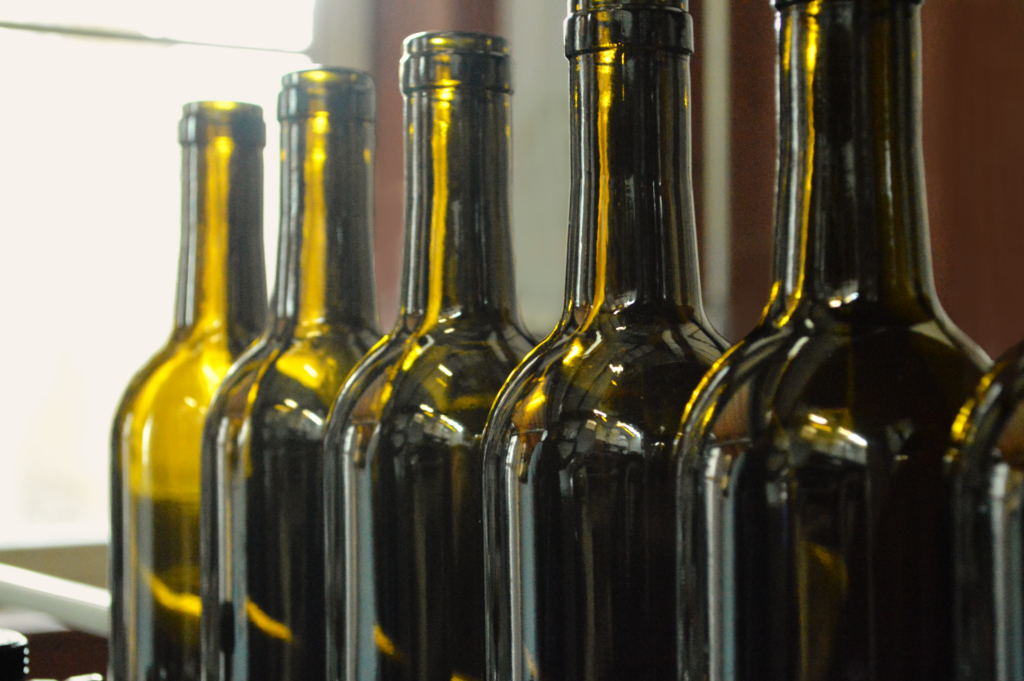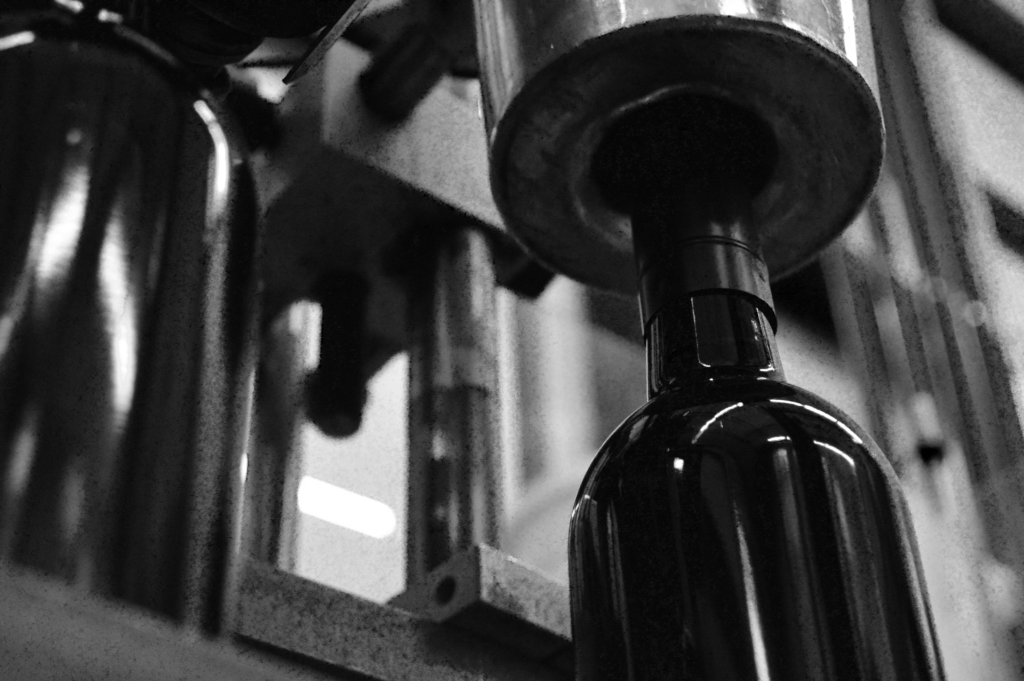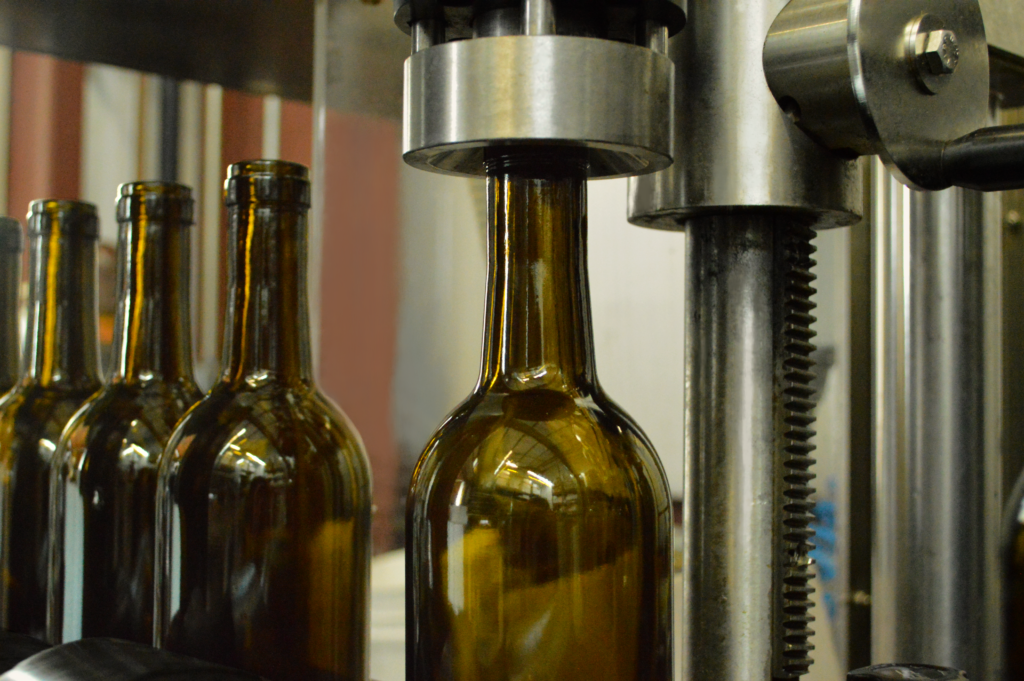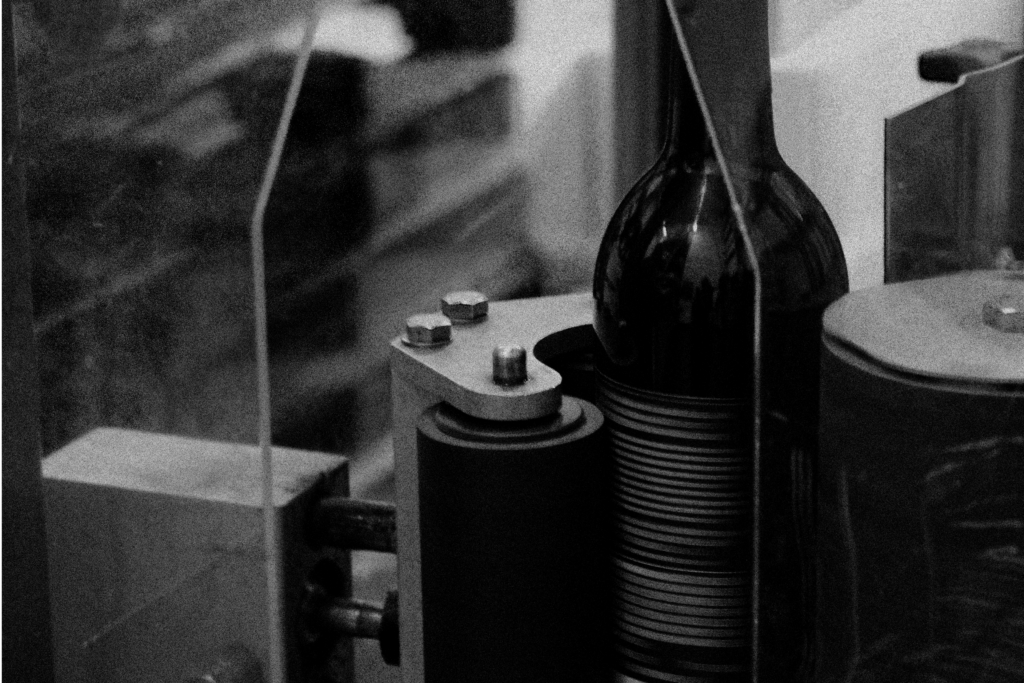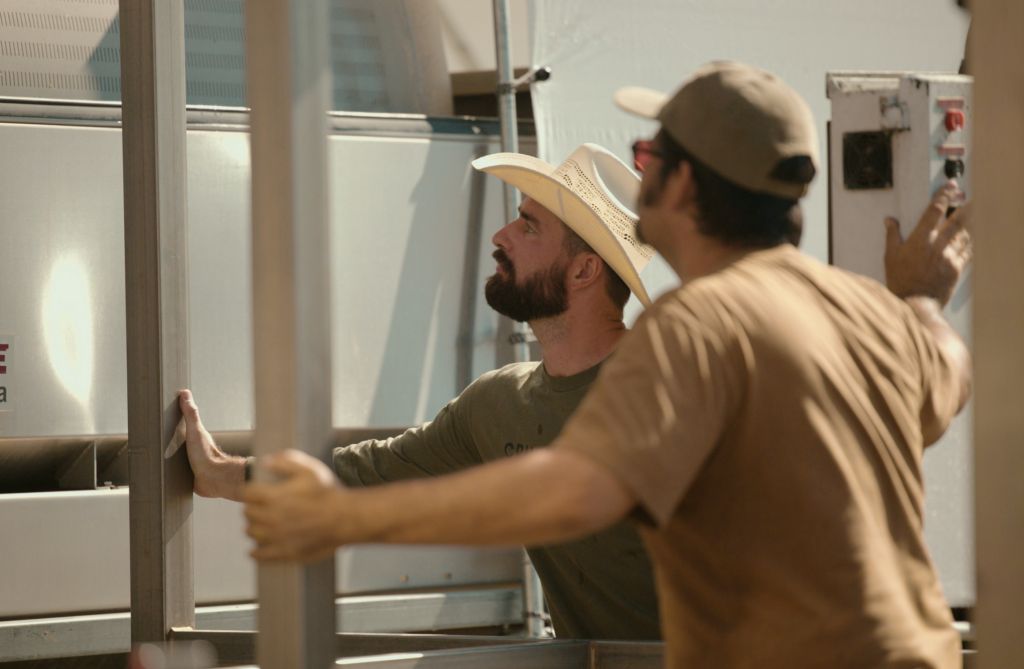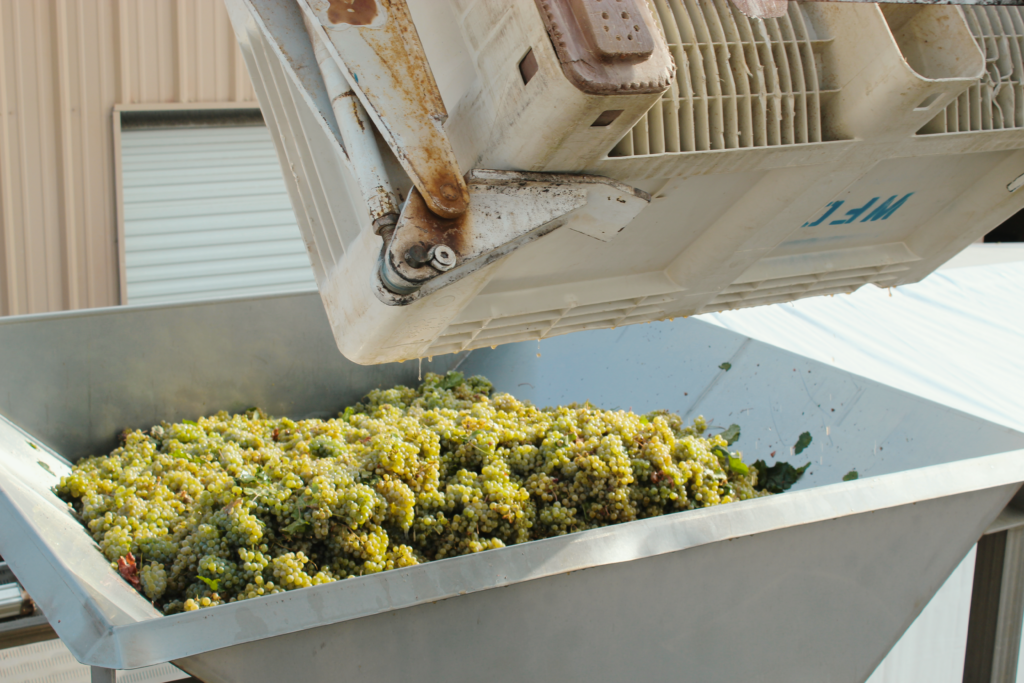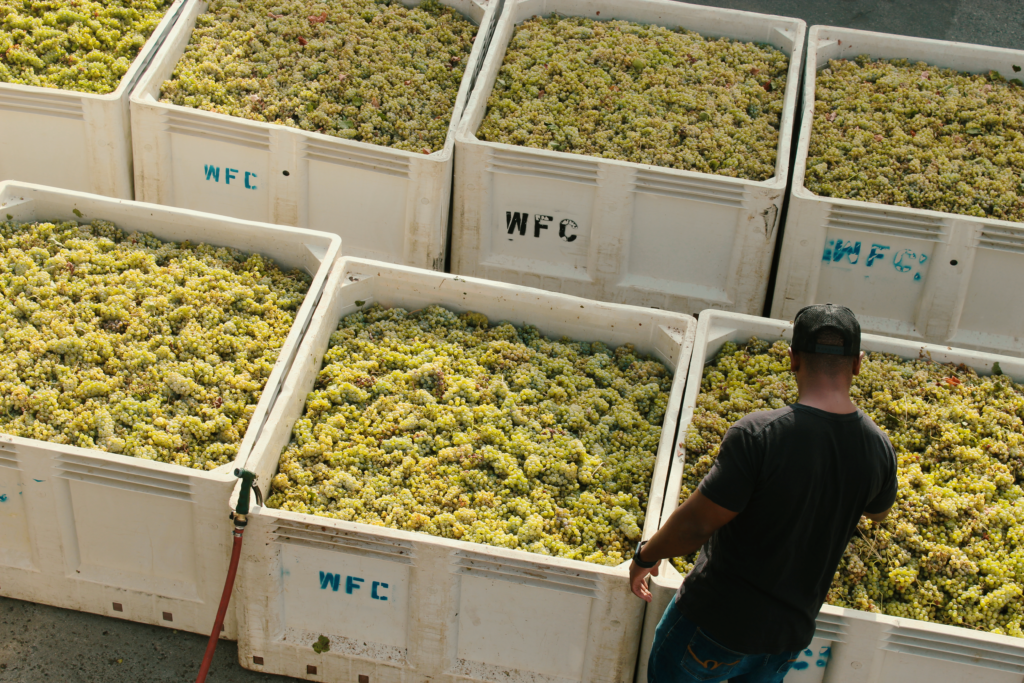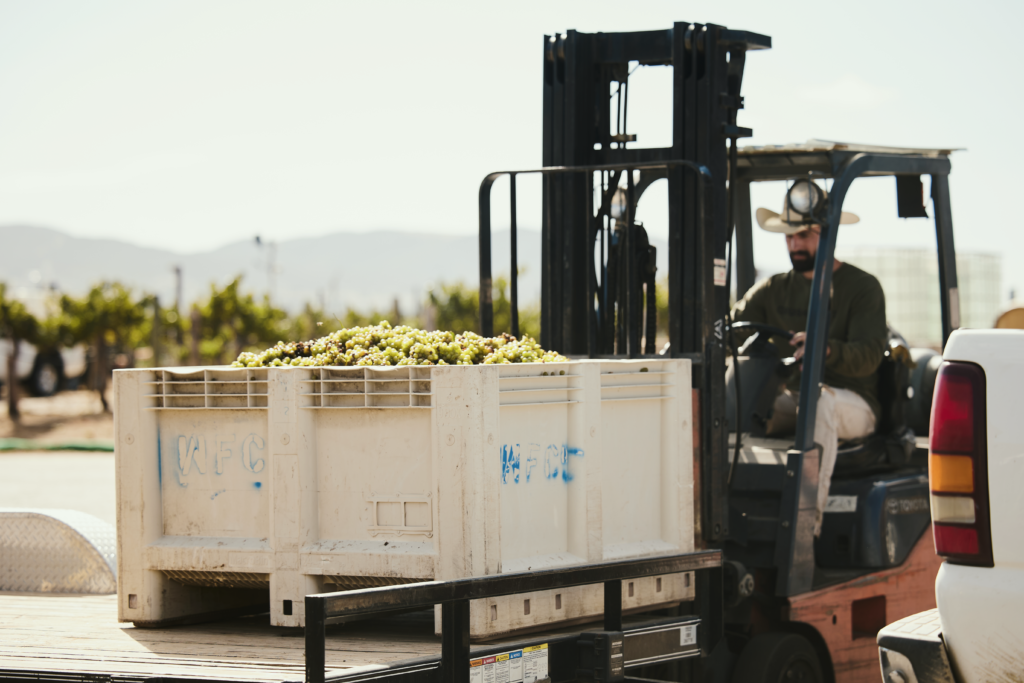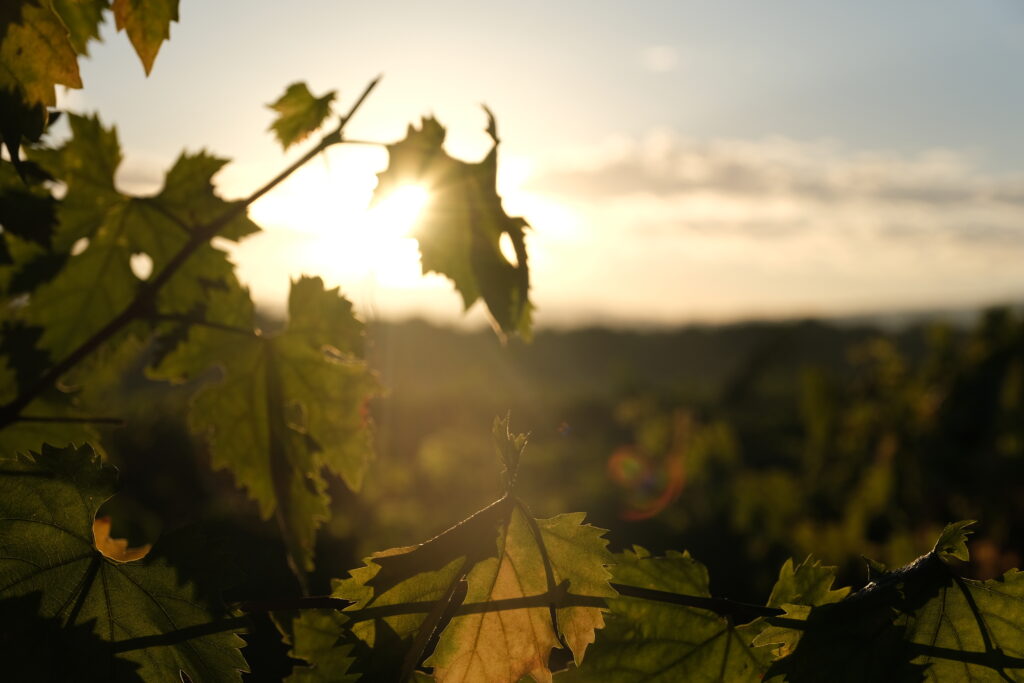
In the rolling hills of Temecula Valley, a remarkable transformation takes place every year – the journey of a grape from the vine to the wineglass. This journey is not merely a scientific process; it’s a symphony of nature’s finest and human craftsmanship, a fusion that culminates in the creation of a delightful elixir we know as wine… & right now, we’re at the peak of it!
In this article, we will delve into the intricate journey that a grape undertakes, guided by the passionate hands of Wiens Cellars. Our family-owned winery in Temecula, CA, has perfected the art of turning grapes into liquid poetry, and we’re here to unveil the stages of this journey that lead to each exquisite bottle we produce.
The Life Cycle of a Grapevine
Every great journey begins with a single step, or in this case, a single seed. The life cycle of a grapevine spans across various stages, each essential in its own right. From bud break to flowering, fruit set to veraison, the vineyard’s rhythm is a dance between the elements and the nurturing hands of the vintners. These stages are the prelude to the grape’s transformation, setting the stage for the grand symphony of flavors that will be played in each bottle.
What are the stages of a grape vine’s life cycle?
- Bud Break: Spring’s tender touch awakens the vine from its winter slumber on the trellis, and the first buds emerge with the promise of new life. This stage sets the foundation for the vine’s annual cycle, as these buds will eventually give rise to shoots and leaves that capture sunlight for energy.
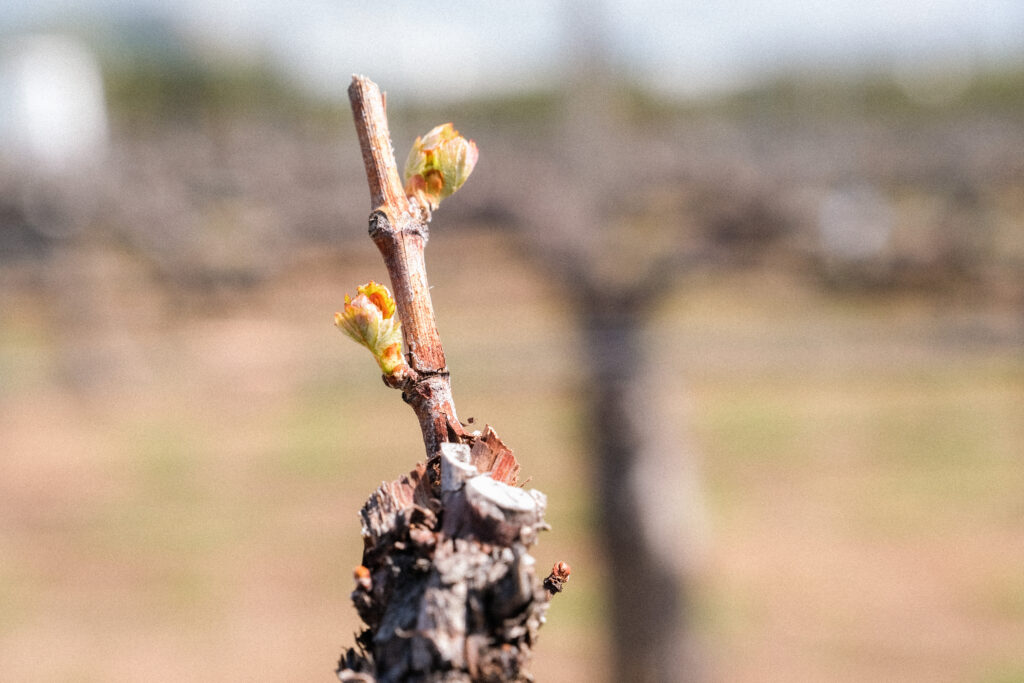
- Flowering: As the sun’s warmth envelops the vineyard, clusters of delicate flowers open & appear. This fleeting yet vital phase showcases nature’s potential for creation. Successful pollination during flowering ensures that these flowers will develop into grape clusters, encapsulating the essence of the vine’s vitality.
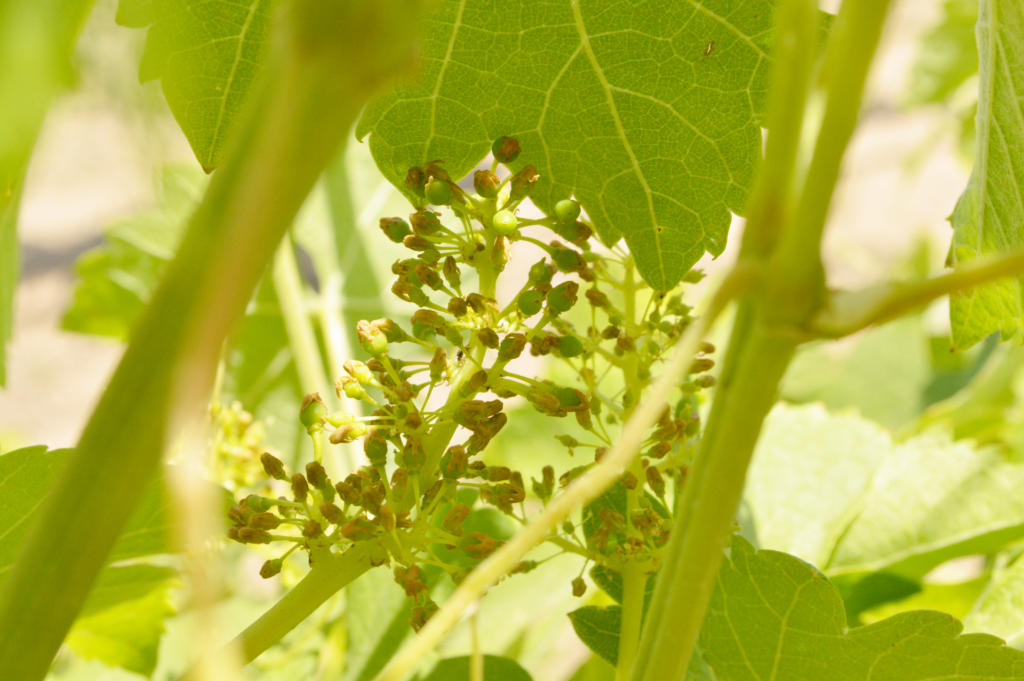
- Fruit Set: The tiny green berries that emerge after flowering represent the manifestation of the vine’s reproductive success. These nascent grapes hold the promise of sweetness, acidity, and complexity. The vine dedicates its energy to nurturing and protecting these young berries, setting the stage for the coming months.
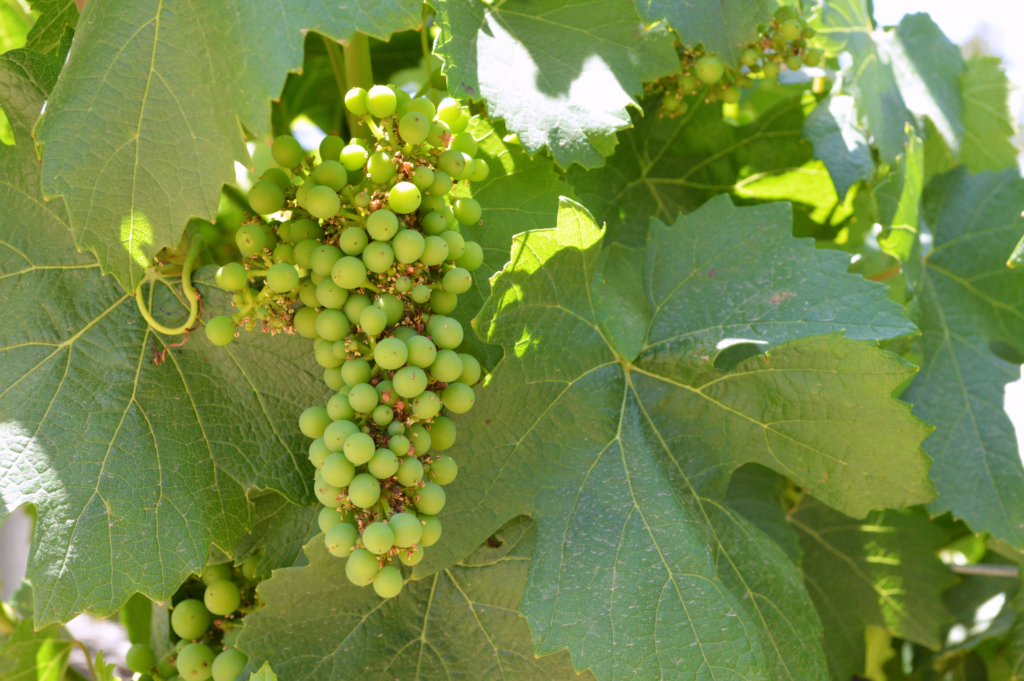
- Veraison: With the arrival of summer, the vine reaches a pivotal juncture. The onset of veraison marks the transition from growth to ripening. Berries transform, softening and changing color as they accumulate sugars and flavors. This stage is a delicate balance between natural processes and meticulous timing, as the winemaker observes the evolution of each grape.
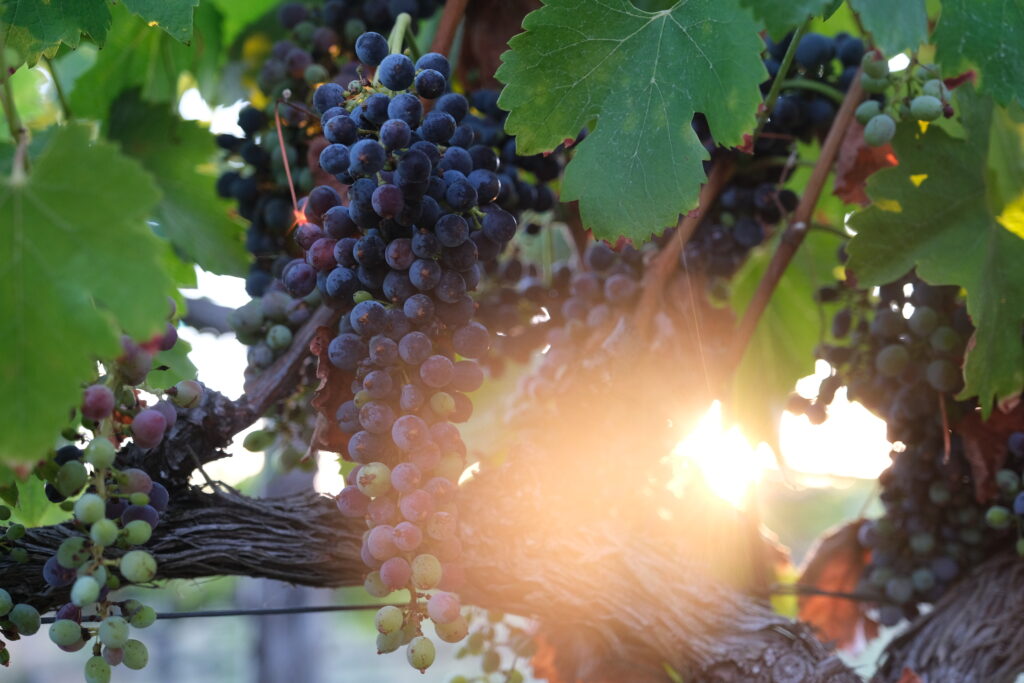
- Harvest: The zenith of the grapevine’s journey arrives with the harvest, a culmination of months of anticipation and cultivation. Each grape cluster, now imbued with the terroir’s essence, is handpicked with care. The role of this stage is to ensure that the grapes are at the peak of their flavor and maturity, laying the foundation for the winemaking process.
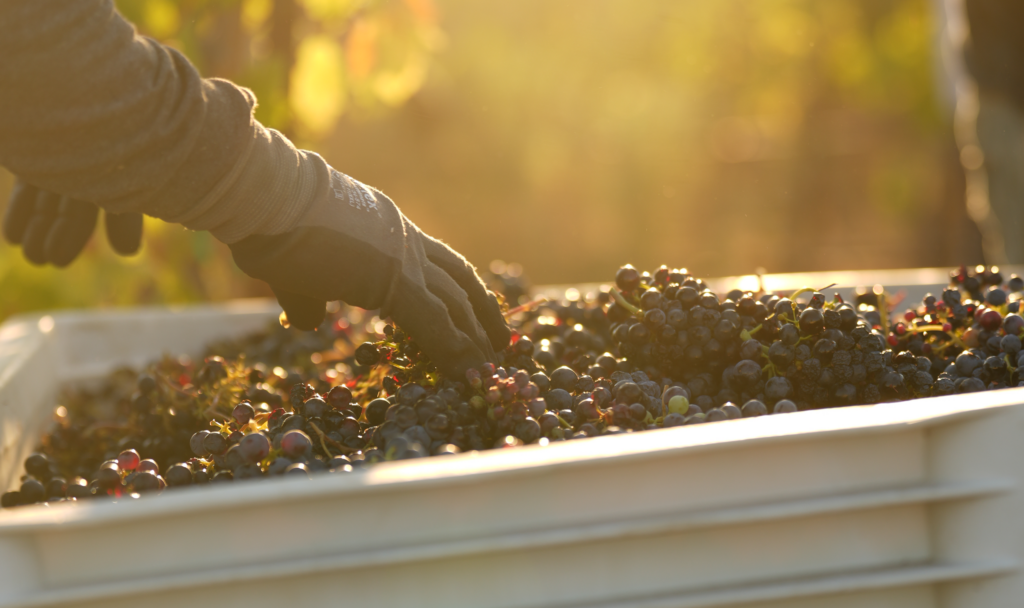
- Post-Harvest Recovery: After the excitement of harvest, the vine takes a breath. As leaves turn vibrant shades and eventually fall, the vine redirects its energy to replenish its reserves. This recovery period is essential for the vine’s health and readiness for the next grape growing season.
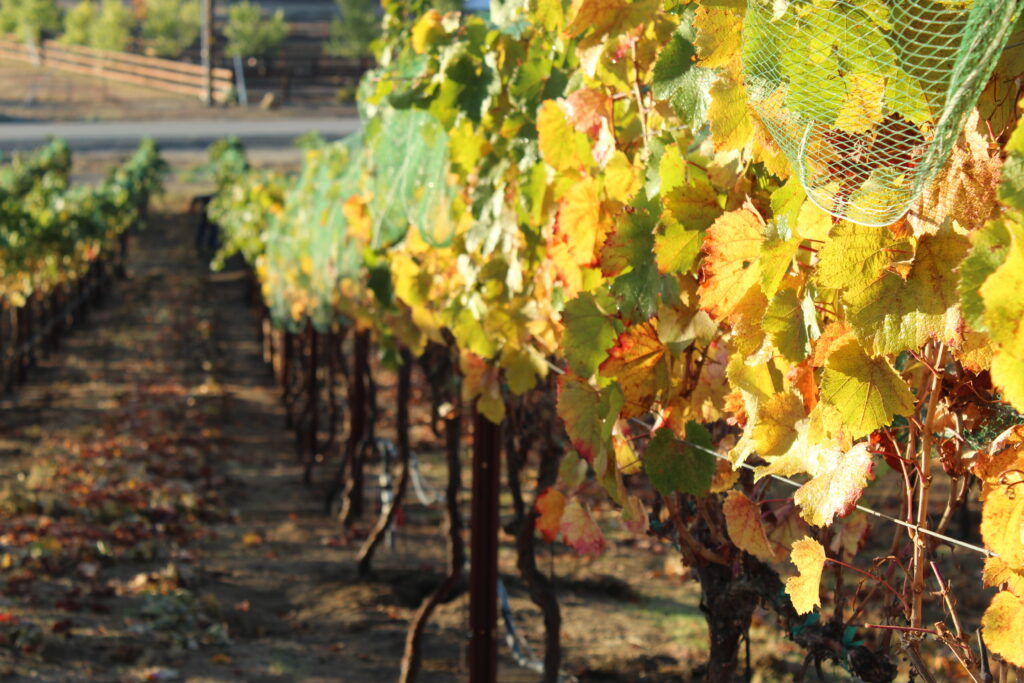
- Dormancy: With the approach of winter, the vine enters a period of dormancy, resting and conserving energy. This stage prepares the vine for the cycle to repeat, as it gathers strength to awaken once more during bud break.
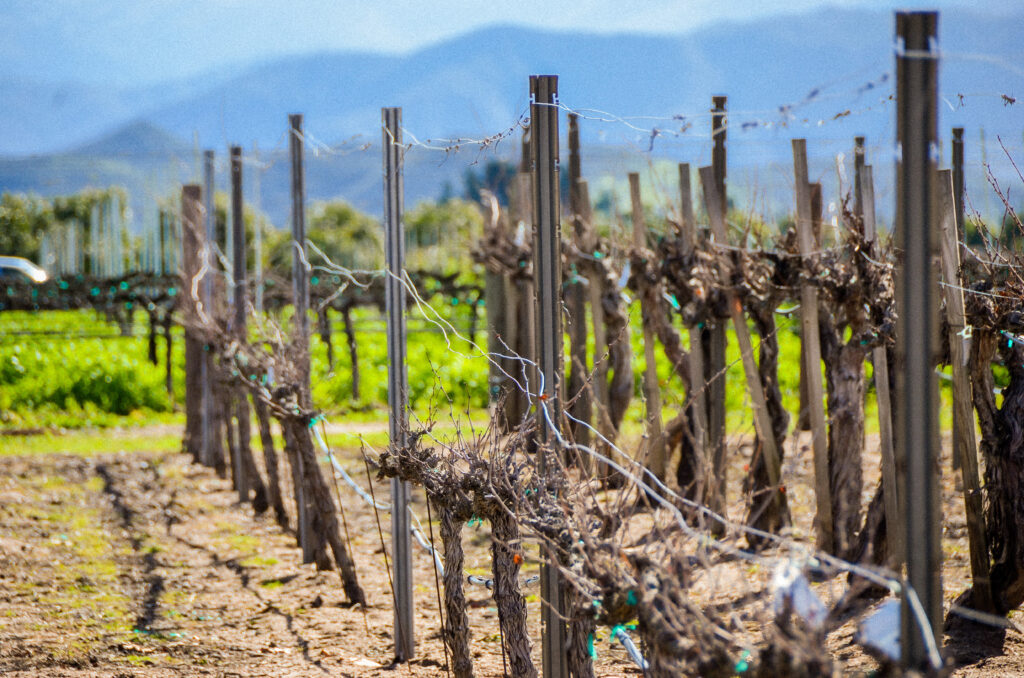
Then, it happens all over again! Each stage in the grape’s journey is a chapter in a story of resilience, growth, and transformation. From the delicate emergence of buds, to the vibrant culmination of grape harvest, the vine’s narrative unfolds with precision and purpose, offering winemakers the raw material to craft wines that encapsulate the journey of both grape and grapevine.
The Variety of Grape Varieties
Like characters in a story, different grape varieties play distinct roles in the winemaking process. Wiens Cellars boasts a diverse array of over 30 varietals, from the bold Bordeaux classics to the enchanting Italian gems. Each variety brings its own personality to the mix, contributing unique aromas, flavors, and textures to the final blend. The vintners at Wiens Cellars understand these varieties intimately, crafting wines that showcase the best of each grape’s character.
Let’s dive deeper into 6 of our more well-known varieties:
- Cabernet Sauvignon: Revered as the king of red grapes, Cabernet Sauvignon delivers rich black fruit flavors, firm tannins, and a robust structure. Its aging potential makes it a favorite for producing age-worthy wines.
- Chardonnay: A versatile white grape, Chardonnay exhibits an array of styles from buttery and oaked to crisp and unoaked. It’s known for its ability to reflect terroir while offering notes of green apple, citrus, and vanilla.
- Merlot: Often associated with smoothness and approachability, Merlot offers soft tannins, red fruit aromas, and a plush texture. It’s a key player in Bordeaux blends and stands on its own as well.
- Sauvignon Blanc: Sauvignon Blanc’s hallmark is its vibrant acidity and aromatic profile, ranging from zesty citrus and green apple to herbaceous and grassy notes. It’s a popular choice for producing refreshing and aromatic white wines.
- Pinot Noir: Prized for its finesse and complexity, Pinot Noir is notoriously finicky to grow but rewards with delicate red fruit flavors, earthy undertones, and a silky texture. It excels in expressing the nuances of its terroir.
- Syrah/Shiraz: Syrah (Shiraz in Australia) boasts bold, dark fruit flavors, pepper spice, and a range of complexities from smoky to floral notes. It can produce both robust and elegant wines, depending on the region and winemaking style.
Harvesting Wine Grapes
The turning point in a grape’s journey is the harvest. Timing is of the essence, as the decision of when to pick influences the wine’s balance, acidity, and sweetness. At Wiens Cellars, this moment is carefully chosen, respecting the grape’s natural rhythm. As our Head Winemaker, Brian Marquez puts it, “Wine is born in the vineyard, but it’s during the harvest that we set its course.” The harvesting process is a labor of love, where each bunch is handpicked to ensure only the finest grapes make their way to the press.
When should you harvest grapes?
The art of harvesting grapes involves a crucial decision influenced by a delicate equilibrium of factors. Winemakers assess the grapes’ sugar levels, measured in degrees Brix, to gauge their ripeness. Concurrently, they consider the grapes’ acidity, pH levels, and the development of phenolic compounds like tannins and color pigments. The goal is to strike the perfect balance between ripe fruit flavors and the retention of sufficient acidity, as this balance shapes the wine’s potential for complexity and aging.
What’s the process of harvesting grapes?
Harvesting grapes is a meticulous endeavor that demands the deft hands of skilled pickers. While mechanical harvesters are used for efficiency, handpicking remains a hallmark of quality for premium wines. Hand harvesters selectively choose clusters, ensuring only the healthiest and ripest grape bunches are collected. Once gathered, the grapes are swiftly transported to the winery to prevent oxidation and maintain their freshness.
How do harvesting techniques impact the final wine?
Harvesting techniques wield a profound influence on a wine’s character and quality. Early harvesting may result in wines with higher acidity and fresher fruit flavors, suitable for crisp whites or sparkling wines. Delayed harvesting yields grapes with elevated sugar levels, leading to richer, more opulent wines. Additionally, the choice between handpicking and mechanical harvesting can impact grape integrity; handpicking allows for careful selection, preserving grape quality, while mechanical methods enhance efficiency but may be less selective. The chosen technique, combined with the precise moment of harvest, shapes the flavor profile, structure, and aging potential of the resulting wine.
From Grape to Glass
With the grapes harvested, the transformation from fruit to nectar begins. The delicate process of crushing and pressing extracts the precious juice that carries the essence of the vineyard. Fermentation, the magical conversion of sugars to alcohol, is a pivotal step. At Wiens Cellars, fermentation is more than a chemical reaction; it’s an art form guided by the hands of skilled winemakers who orchestrate the process to perfection.
Crushing vs. De-Stemming
- Crushing and Pressing Grapes: The process of crushing and pressing grapes is a fundamental step in winemaking, where the transformation from grape to wine begins. After meticulous harvesting, the grape clusters are directed into a crusher that gently breaks the skins and releases the juice, creating a mixture known as “must.” This initial contact between juice and skin extracts essential compounds like flavors, colors, and tannins. Subsequently, the must is transferred to a press, where varying degrees of pressure are applied to separate the liquid portion from the solid components, such as skins, seeds, and stems. The extracted juice, now infused with the essence of the grapes, serves as the starting point for fermentation, propelling the grapes’ journey towards becoming wine.
- De-stemming and Pressing: Before pressing, some winemakers opt to de-stem the grape clusters, removing the stems to prevent excessive tannin extraction and maintain a desired flavor profile. De-stemming is particularly common with red grape varieties, as tannins are concentrated in the stems. After de-stemming, the grapes are then directed to the press. Here, the pressure applied varies based on the desired outcome. Gentle pressing, often used for white wines, ensures minimal contact with the skins to preserve delicate aromatics. For red wines, more forceful pressing may occur, as extended skin contact contributes to color, structure, and tannin extraction. This multi-faceted process underscores the winemaker’s choices in crafting wines that embody their vision and desired style.
Fermentation
Fermentation is the alchemical process that transforms grape juice into wine, embodying the heart of winemaking. It begins with the introduction of yeast into the juice, where these microorganisms feast upon the sugars, converting them into alcohol and carbon dioxide. As fermentation progresses, the juice undergoes a symphony of chemical reactions, releasing a spectrum of aromas and flavors locked within the grapes. Beyond alcohol, yeast produce secondary metabolites that contribute to the wine’s complexity, including aromatic compounds and compounds that influence texture and mouthfeel. Fermentation not only bestows the wine with its alcoholic content but also shapes its character, making it a pivotal step in crafting wines that are diverse, expressive, and captivating.
Aging and Bottling
As the wine evolves, the aging process imparts depth and complexity. Oak barrels, carefully selected by the winemakers, add layers of flavor that harmonize with the wine’s characteristics. Time becomes an ally as the wine matures gracefully. Bottling is the crescendo of this phase, capturing the culmination of years of hard work and anticipation. We’ll break it down for you really quick:
The Process of Aging Wine
Aging wine is a patient endeavor that allows the wine to mature and evolve, transforming its flavors, aromas, and texture over time. During this phase, the wine rests in controlled environments, often in barrels or tanks, where it interacts with the compounds extracted during the fermentation process. Through oxidation and slow chemical reactions, the wine’s harsh edges soften, tannins integrate, and flavors harmonize, resulting in a more balanced and complex profile.
The Role of Oak Barrels in Aging
Oak barrels play a pivotal role in the aging process, imparting unique characteristics to the wine. As wine interacts with the wood, compounds like vanillin and lignin are extracted from the barrel, lending flavors of vanilla, spice, and toast. Additionally, the porous nature of oak allows for controlled oxygen exchange, contributing to the wine’s development and enhancing its texture. The choice of oak, whether French, American, or other, influences the final flavor profile and structure of the wine.
The Process of Bottling Wine
Bottling marks the culmination of the aging journey, as the matured wine is carefully prepared for its final presentation. The wine is first removed from its aging vessel and filtered to remove any sediment or solids that may have developed during the aging process. It’s then bottled under controlled conditions to maintain its integrity. The wine bottles are typically sealed with corks or other closures, protecting the wine from oxidation while allowing for a gradual aging process in the bottle. Once bottled, the wine is labeled, and each bottle becomes a vessel of the journey it has undertaken, ready to be enjoyed by connoisseurs seeking to savor the culmination of the winemaking art.
The Journey of a Grape at Wiens Cellars
Wiens Cellars’ commitment to quality resonates throughout the grape’s journey. The legacy of the Wiens family, passed into the hands of the Steinhafel family, is a testament to the enduring values of family, quality, and integrity. Our owner, David Steinhafel explains, “In every cluster of grapes, there’s the potential for an exceptional bottle – it’s our job to uncover that potential.” Our hands-on approach, from the meticulous grape selection to the aging process, ensures that each bottle reflects the essence of the Temecula Valley terroir.

